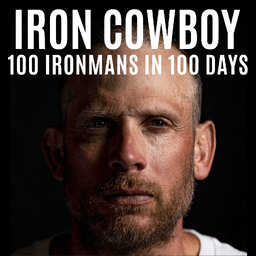How many calories should you be eating as a triathlete?
How many calories should you be eating each day as a triathlete?
I’m asked this question constantly, but it’s not as simple as just giving you a number. There are so many factors to consider and a lot of misinformation that can confuse things. Don’t worry though! This week, I’m breaking down the topic of calories and giving you simple straightforward advice that can enhance you’re training and performance.
As a triathlete, your caloric needs are unique and far greater than the general population. You’re not just training for one sport, but three, which means your body requires more energy to sustain those training hours. Unfortunately, many triathletes underestimate how much they need to fuel their bodies properly, which can hinder performance.
Every triathlete is unique, and your caloric intake should reflect that. Your daily caloric needs are impacted by various factors such as age, gender, body composition, and most importantly, your training intensity and duration. For example, the caloric demands of an Ironman competitor will vastly differ from someone preparing for a sprint race or in the off-season.
To determine your caloric requirements, it's essential to grasp the concept of Total Daily Energy Expenditure (TDEE), which includes:
1. Basal Metabolic Rate (BMR): The amount of energy required for your body to function at rest, making up about 60-75% of your needs.
2. Non-Exercise Activity Thermogenesis (NEAT): Energy expended through daily activities such as walking or household chores.
3. Thermic Effect of Food (TEF): Calories burned through the digestion process, accounting for about 10% of your TDEE.
4. Exercise-Associated Thermogenesis: Calories burned during training sessions, varying greatly depending on the intensity and type of activity.
When consuming calories, focus not just on the quantity but the quality. A total caloric target compounds into the macronutrient distribution: carbohydrates, proteins, and fats. Carbohydrates are the primary source of energy for triathletes, while proteins aid in muscle recovery and repair. Fats offer high caloric density but are vital for their anti-inflammatory benefits.
Instead of following a static number, it's crucial to periodise your nutrition in keeping with your training phases. Adjust your intake over the course of a week, month, or year as training loads vary. There will be times to drive a slight caloric deficit for body fat loss, and others when maintaining or slight surplus is necessary.
Lastly, it’s important to listen to your body's cues. Being consistently hungry or frequently sick might indicate that your nutritional strategy requires tweaking. Remember, achieving balance in properly fuelling your body translates into increased training availability, thereby enhancing your overall performance.
If you wish to delve deeper into understanding your personalised caloric needs and how to optimally meet them, consider joining the Triathlon Nutrition Academy, where we provide personalised support to help you achieve your performance objectives.
Remember, a well-nourished triathlete is a successful triathlete.
LINKS:
Support the TNA Podcast: https://www.dietitianapproved.com/legend
Check how well you’re doing when it comes to your nutrition with our 50 step checklist to Triathlon Nutrition Mastery: dietitianapproved.com/checklist
Start working on your nutrition now with my Triathlon Nutrition Kickstart course: dietitianapproved.com/kickstart
It’s for you if you’re a triathlete and you feel like you’ve got your training under control and you’re ready to layer in your nutrition. It's your warmup on the path to becoming a SUPERCHARGED triathlete – woohoo!
Join the waitlist for our next opening of the Triathlon Nutrition Academy www.dietitianapproved.com/academy
Website: www.dietitianapproved.com
Instagram: @Dietitian.Approved @triathlonnutritionacademy
Facebook: www.facebook.com/DietitianApproved
The Triathlon Nutrition Academy is a podcast by Dietitian Approved. All rights reserved. www.dietitianapproved.com/academy
 Triathlon Nutrition Academy
Triathlon Nutrition Academy


